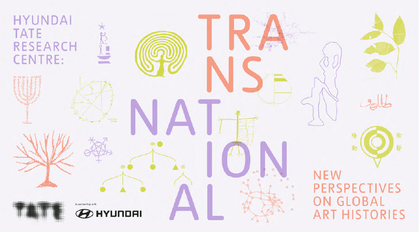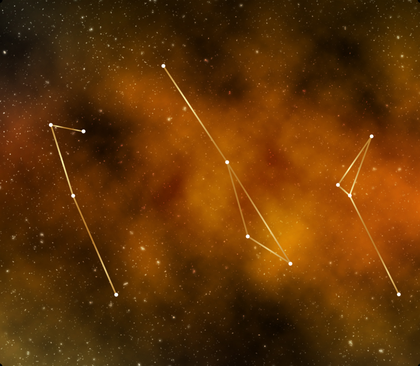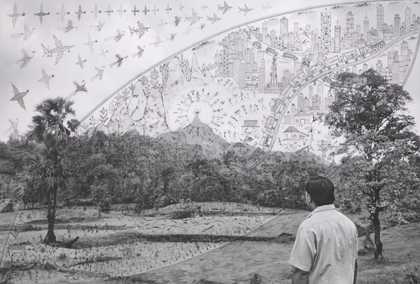When I came back from the UK and I found this piece of land I felt back at home.
It's been 25 years since my brothers had cultivated the land and I ran for miles all over the place looking from the mountains attempting to locate the tree, the peru, because that has such a memory for it.
When I finally found it one evening I came here and it was a blessing because everything was green and it was really like a welcome home.
This still is farming land and yet the growth of Mexico City is without regard.
When I was a kid you could go any way any direction, there were mountains, there were trees, there were birds, there was a free space to play.
Today every other street you walk the house has grown so large, high up you have literally lost the horizon.
It means that we have lost our direction, what we do and what we do it for.
I call myself Huehuecóyotl, my family calls me like that, it means all fire coyote, the oldest coyote.
Coyotl is able to join worlds and to me it was clear I was joining the wild aspect of the old world with the cultural aspects of my own homeland.
In my work are references to memories, to childhood, to the idea of discovery because what they feel, what the country and our relationship with the land does is precisely that.
The very idea of seeing a plant born, a seed germinate, is to be in the very presence of the mystery of what life is.
In the past we used to see the moon, the sun, in order to do harvest planting and so on.
Nowadays electronics is our relationship to the world.
Electronics are central to what I do, not just as a medium through expressing things but more importantly as a medium to be explored. To me that now is nature.
Nature has been replaced by the transistor.
I studied engineering, I am now an artist and I see the differences between humanities and industry.
Cihuapapalutzin is a work composed of 104 tin can shaped butterflies made into the exact size and shape of the monarch butterfly and that particularly has to do with issues of death, conservation, because the species is in danger of disappearing from the face of the world.
I particularly call this work the ambassador of the free trade agreement between America, Canada and Mexico because it travels all the way.
This particular butterfly is particularly significant to me because when my sister died I had constructed one such butterfly but larger.
So I had to put it in her coffin thinking that perhaps my sister's energy is within me.
Tecalco is like a little oasis, it's the joy of my nephews, it's the joy of having my mother around.
For me Tecalco is a picture of who we are.
It's not just our house, it's a house for our neighbours, it's a house for the kids that come every Saturday for the reading club that my mum began 23 years ago.
After that we incorporated Calpulli Tecalco which primarily deals with issues of language, the Nahuatl language. Preserving it, promoting it.
People who learn to express themselves learn to have a view, a perspective on what they read and I think people have become stronger.
We are attempting to recover some of the characteristics of native communities.
My mother is so vital in that particular way because through her we have the connection to the land.
Before there were cars and the eternal presence of the laptop on.
You could hear sounds that they were not recognisable, you would get frightened.
I got the experience of that nature that are not necessarily from this world.
Now that there is such noise as amplifiers, televisions, radios, all the electronic gadgets.
I do believe that the frequencies that they emit they have got rid of the ghosts of this land.
You hear all the time the passing of cars coming and going and you hear the police and so on.
There's no room for ghosts.
Travelling to Mexico City is not easy because of the growth of the people living in Mexico City but also by the sheer inability to truly live well with the car because the car creates such traffic jams that is impossible to move.
The film Si no fuera por estos momentos was shot at different locations in Mexico City, Chimalhuacán, Santa Fe (which is one of the poshest sides of Mexico City) all to do with the having a kind of a picture a contrast between the countryside and the city that at that moment began to eat up all Milpa Alta.
Today specifically if it does not have a commitment to the environment, to what we are causing, then art has really no social function. It has to be spoken from the heart and acquainted with the people you are speaking about.
What we produce is machines that are just machines, they have no an ability to speak to us.
Having had this type of dialogue has not only allowed me to see that it is possible to humanise technology but also that if we were to add humanities into the studies of engineering we would produce engineers of quite a different type that would produce objects and systems more respective of nature.
When you speak Nahuatl what we call objects in Spanish or English are no longer objects, are people that are inhabiting the world that we live in with equal rights.
I'm not afraid to say the churches the buildings that remind us of the colonial days are collapsing in Mexico City and the pyramids are coming back again.
I feel particularly glad that this is happening because I do believe we have a lot to learn from the past.
Either we halt this situation and change our attitudes and save the world or else it won't last it simply won't last.



